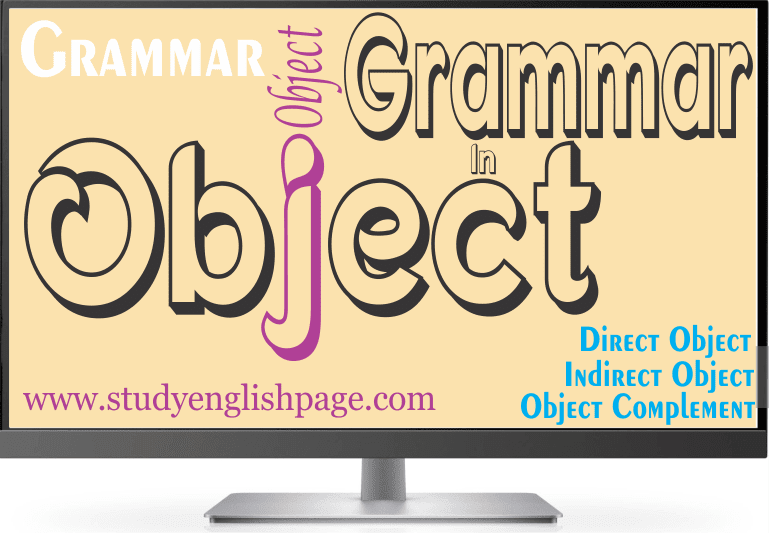Object in Grammar

Definition
Object in grammar is defined as someone or something that
receives an action. The receiver of action can be a noun, phrase, or clause.
In this case, a phrase or clause functions as a noun.
- Ali studied math.
In this example, the receiver of the action (studied) is math.
Math is the object in this sentence.
- He answered all the questions.
The receiver of the action in this example is all the questions.
All the questions is a noun phrase that functions as a noun and is used here as an
object.
- I listened to what you told him.
What you told him is a clause functioning as a noun and
receives the action (listened). Therefore, we call this clause an object in
this sentence.
Types of Objects
There are two types of objects named direct objects and
indirect objects. It must be in your mind that we categorize objects as direct
and indirect only when we have two objects in a sentence. If there is just one
object in a sentence, it must be a direct object.
Direct object
A direct object receives an action of a verb directly by
answering the questions ‘Whom’ or ‘What’.
- He called Ali. (Whom did he call?)
- He kicked the ball. (What did he kick?)
- They studied all related documents. (What did they study?)
- We minded what you hide from us. (What did we mind?)
The above examples are the answers to the questions
mentioned in the parentheses.
Indirect Object
An indirect object is defined as a recipient of the direct
object that receives the action of the direct object by answering the questions
to or for whom or what.
- She bought a gift for me.
- I told a story to them.
"Me and them" are the recipients of the direct objects (gift
and story) in the above examples. They receive the actions indirectly.
Remember that there must be a direct object in a sentence
with an indirect object. When there is just one object in a sentence, the
object is considered a direct object.
- I told a story to them.
- I told them.
In the first example, ‘them’ is the indirect object because
it is the recipient of the direct object (story). In the second example, ‘them’
is the direct object because the object is just one in the sentence.
Position of Direct and Indirect Objects in a Sentence
Position of Direct Object
If there is a direct object in a sentence without an indirect object,
the direct object comes after the verb. If there are two objects in a sentence, the
direct object can be placed after the verb or the indirect object.
- He gave invitation card to me.
- He gave me an invitation card.
Position of Indirect Object
There are two options to place the indirect object in a
sentence. We can place an indirect object after a verb or after a direct object.
We use the preposition to or for when we place it after a direct object. The reposition
to or for is not needed when it is used just after a verb.
- He presented us with a topic.
- He presented a topic to us.
Object Complement
It is a noun, pronoun, adjective, or phrase that comes after a direct object to describe it or rename it.
- He proved me right.
- I will name her Diya.
If we omit the adjective (right) and the noun (Diya) from
the above examples, they will not give complete sense. In short, we use object
complement to make a sentence that gives a complete sense.
